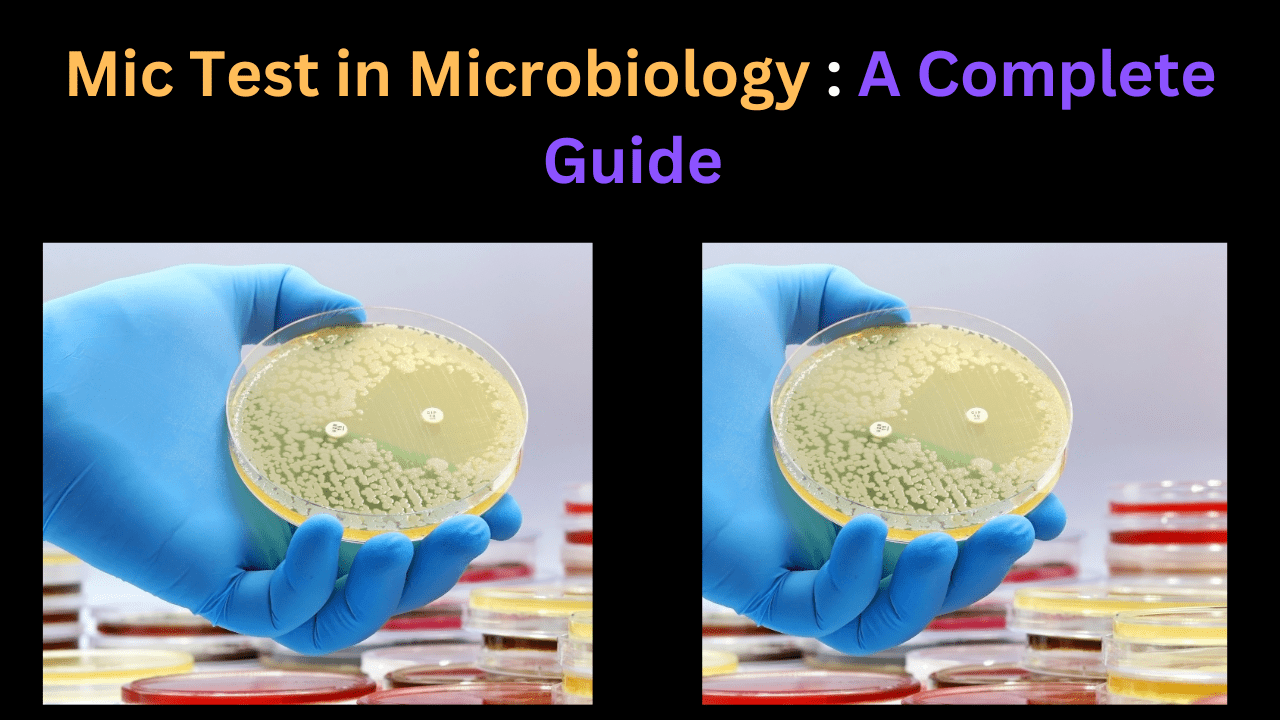MIC stands for Minimum Inhibitory Concentration test. It is used to find the lowest concentration of an antimicrobial agent that can prevent visible growth of a microorganism. This test is critical for diagnosing infections, choosing the
- Right antibiotics
- Understanding microbial resistance.
In this article, you will learn about
- What the MIC test ?
- How it works?
- What are the uses of MIC test?
What is the MIC Test?
Minimum Inhibitory Concentration (MIC) refers to the smallest amount of an antimicrobial agent needed. It can be an antibiotic or antifungal. This amount is required to inhibit the visible growth of a microbial strain under standardized conditions.
The MIC test helps microbiologists answer a crucial question. It determines how much of a drug is needed to stop this microorganism from growing.
Why is the MIC Test Important in microbiology?
- Determines Effective Dosage: Helps clinicians prescribe the right dose of antibiotics.
- Identifies Resistance: Detects antimicrobial resistance trends in bacteria and fungi.
- Guides Antibiotic Stewardship: Reduces misuse and overuse of antibiotics.
- Supports Drug Development: Assists pharmaceutical companies in testing new antimicrobials.
How is the MIC Test Performed?
There are several standard methods for performing the MIC test, but here you will learn four main techniques including:
1. Broth Dilution Method
- Macrobroth and Microbroth formats
- Serial dilutions of antibiotics are prepared in broth media.
- The microbial inoculum is added and incubated.
- MIC is the lowest concentration without visible turbidity.
2. Agar Dilution Method
- Antibiotics are incorporated into agar plates.
- Bacterial inocula are applied and incubated.
- MIC is determined by observing the lowest concentration with no visible growth.
3. E-test (Epsilometer Test)
- A plastic strip with a gradient of antibiotic is placed on an inoculated agar plate.
- MIC is read where the ellipse of inhibition intersects the strip.
4. Automated Systems (e.g., VITEK, MicroScan)
- Rapid, high-throughput MIC determination.
- Used in clinical microbiology labs for efficiency and accuracy.
Applications of MIC Testing
- Clinical Microbiology: Tailoring treatment plans for infections.
- Pharmaceutical Research: Testing new drugs against bacteria and fungi.
- Veterinary Medicine: Determining effective dosages for animal pathogens.
- Agricultural Microbiology: Managing plant and soil microbes.
MIC Test Interpretation
MIC values are interpreted using breakpoints set by organizations like:
- CLSI (Clinical and Laboratory Standards Institute)
- EUCAST (European Committee on Antimicrobial Susceptibility Testing)
Results are classified as:
- Susceptible (S)
- Intermediate (I)
- Resistant (R)
Limitations of the MIC Test
- Time-Consuming: Traditional techniques can take 24–48 hours.
- Doesn’t Show Bactericidal Effect: MIC indicates inhibition, not killing.
- Variability: Inconsistent results with non-standard methods.
Conclusion
The MIC test is a vital tool in the fight against infectious diseases and antibiotic resistance. Understanding MIC values empowers professionals to make evidence-based decisions about antimicrobial use. This is true whether they work in hospitals, research labs, or the pharmaceutical industry.
Key Takeaways:
- MIC = Minimum Inhibitory Concentration
- Used to determine the lowest effective antibiotic dose
- Helps track and manage antibiotic resistance
- Widely used in clinical, veterinary, and research microbiology
Frequently Asked Questions (FAQs)
1. What is the full form of MIC?
MIC stands for Minimum Inhibitory Concentration.
2. What is the difference between MIC and MBC?
MIC shows inhibition of growth, while MBC (Minimum Bactericidal Concentration) shows killing of bacteria.
3. How long does the MIC test take?
Typically, 18–24 hours, depending on the organism and method used.
